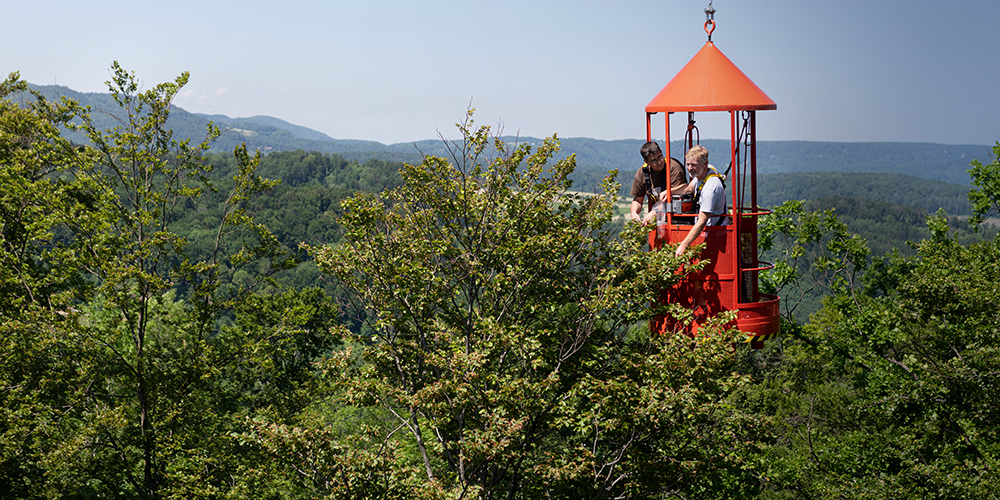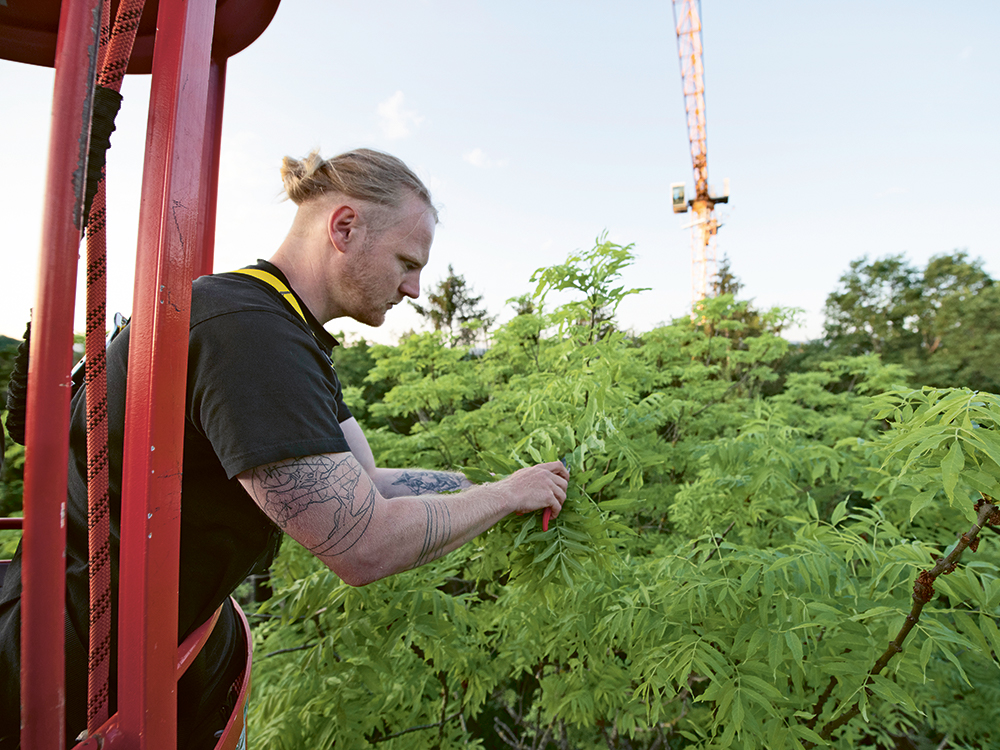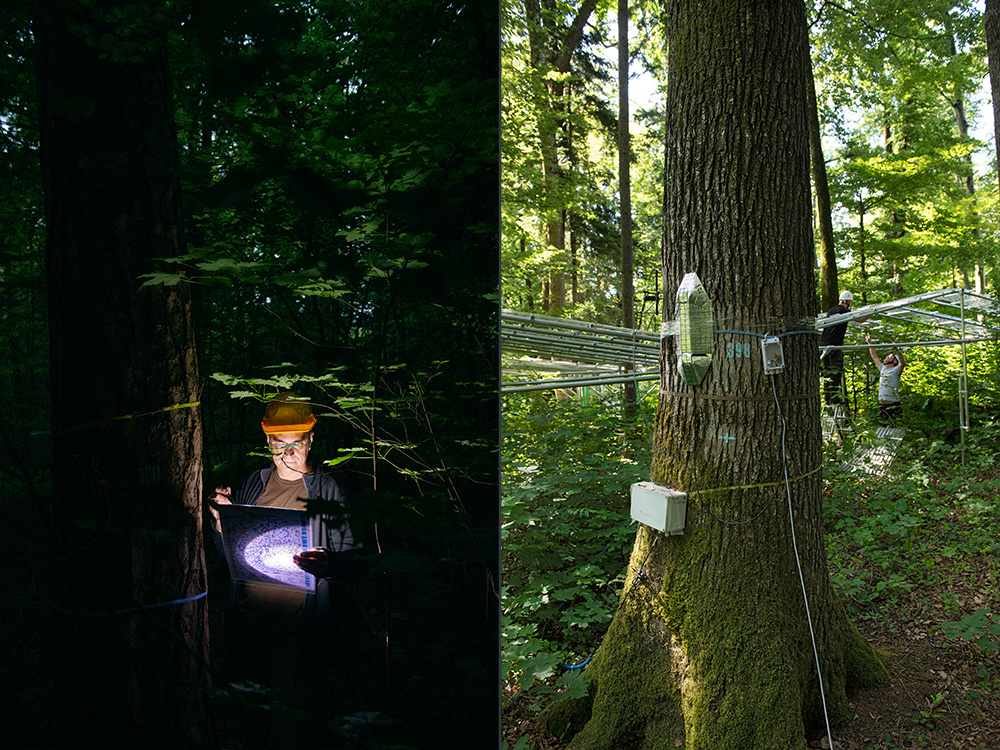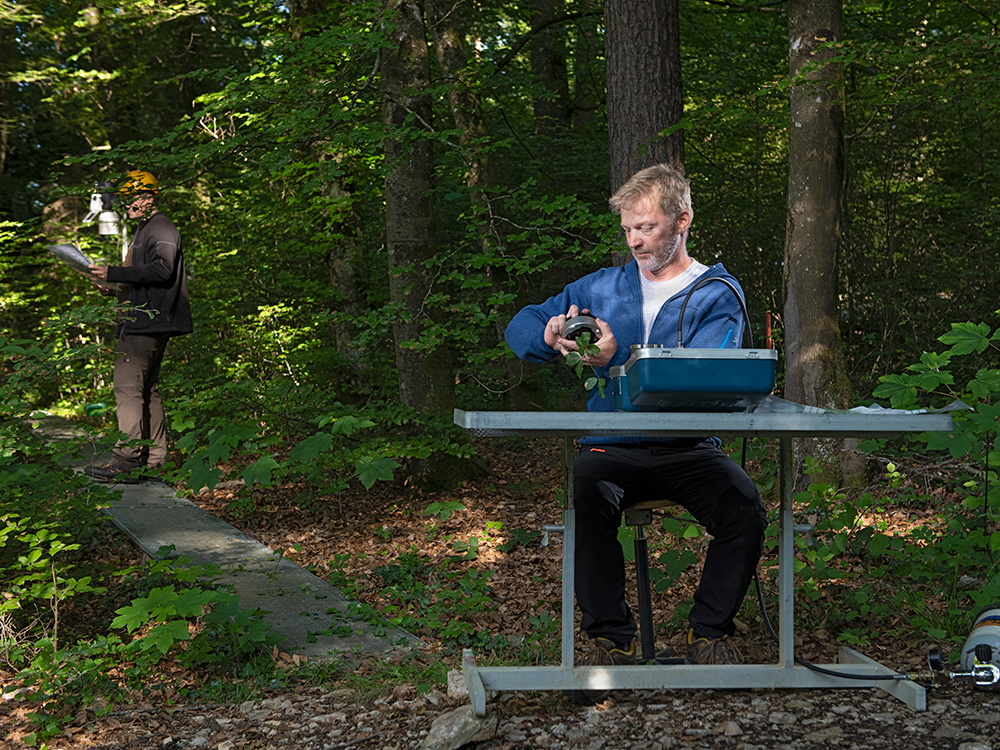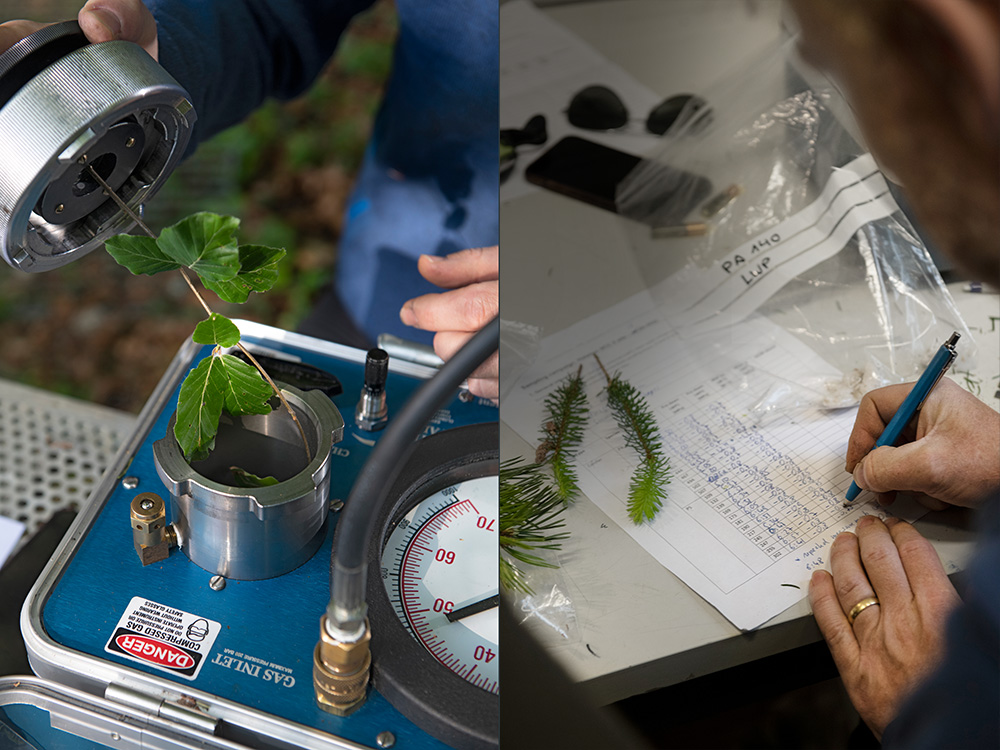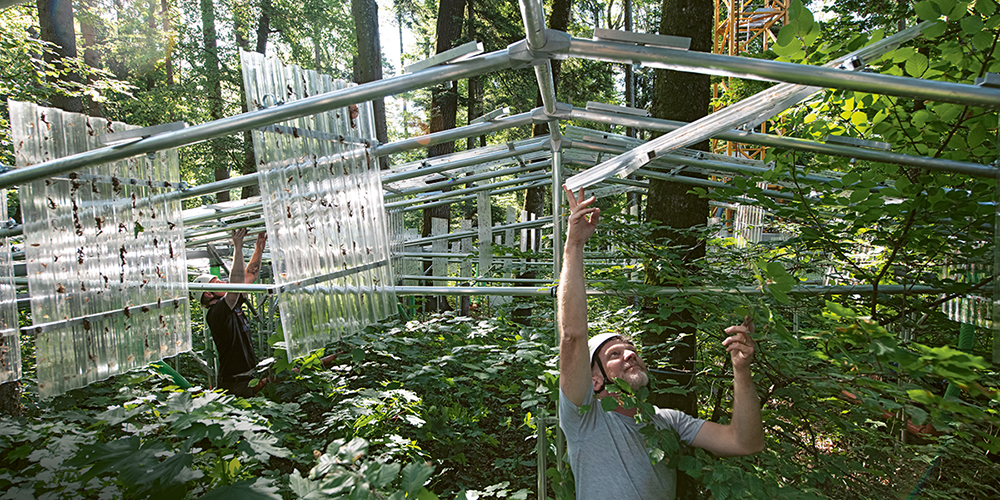A forest without rain.
Text: Angelika Jacobs
In woodland in Hölstein (Canton of Basel-Landschaft), Ansgar Kahmen’s team studies how trees cope with climate change. A visit to the forest lab.
Almost no rain for months. We had a very dry summer again this year, and it probably won’t be long before we experience another just like it: Climate change increases the chances of extended periods of drought. The droughts of the past few years have left a palpable mark on the forest in many places.
Foresters are wondering how to cope with a future in which dry periods occur on a regular basis. Should they plant saplings from other regions that normally receive less precipitation? Or is it better to let nature run its course and hope that the trees adapt? How can they even do that?
“A 100-year-old tree germinated under conditions that were totally different than the ones we see today,” says Kahmen, a professor of botany. In their “forest lab”, he and his research team conduct a wide range of tests to find out how the trees adapt to new environmental conditions, determine which tree species are particularly hardy and identify the biological factors involved in their increased adaptability. When the group began its research in 2018, the researchers in the forest lab were the only team in Europe to comprehensively document the effects of that extremely hot summer on Europe’s most important tree species.
One way the researchers collect data is by climbing aboard a cable car that lifts them into the canopy with the help of a crane. This crane is the only one of its kind in Switzerland – it is the only one that has been approved for transporting people. At a height of around 30 meters, Kahmen and his team take measurements in the canopy or collect leaves from selected species for further analysis.
The research team is up before dawn collecting data, gathering leaves and checking the sensors in the forest floor and on the tree trunks. Soil sensors measure the temperature and moisture level every ten minutes. The researchers have mounted band dendrometers and other devices on the trunks of 160 selected trees. These measuring devices use a kind of “measuring tape” to record changes in the trunk circumference, which can provide information on tree growth.
Other sensors known as “point dendrometers” automatically measure minute movements in the trunk when it expands or contracts by micrometers. The pores or “stomata” of the leaves are open during the day, allowing water to evaporate. This creates negative pressure in the tree’s vascular system, drawing water up the trunk from the roots and causing the trunk to contract. When there is sufficient water available, the trunk expands again when the stomata close at night. If a tree fails to expand back to its full circumference, it indicates that the trees is suffering from water shortage.
The researchers measure the leaves they have collected from the canopy in multiple steps: Ansgar Kahmen prepares a twig for a measurement of its water potential. The water potential indicates how well a tree is supplied with water. If the water potential decreases, the tree closes its stomata to save water. Should the water potential continue to sink, this can lead to irreparable damage to the tree’s hydraulic system.
The Scholander pressure bomb, an instrument used to measure water potential, was developed in the 1950s. It is a simple pressure chamber connected to a tank of pressurized gas. The cut end of the twig extends out of the top of the chamber. Starting at normal air pressure, the researchers increase the pressure inside the chamber until sap is forced out of the water transport tissues at the end of the twig. By measuring the difference between this pressure and normal air pressure, researchers can calculate the water potential of the twig and determine whether the tree is drought-stressed.
The researchers take regular measurements from the crowns of the various species to determine the status of the trees’ water supply. Kahmen and his team combine this data with the measurements they collect from the sensors on the trunks and in the soil to create a timeline of the trees’ responses to extended periods of drought.
The centerpiece of the forest lab is a structure with sections of roofing designed to divert some of the precipitation. This way, the researchers can dry out the soil around selected trees. They expose these trees to artificial drought and record the response compared to neighboring trees without roofing to divert the rain. The drought experiment in the forest lab will officially begin in early 2023.
Ansgar Kahmen has been Professor of Physiological Plant Ecology in the Department of Environmental Sciences at the University of Basel since 2013. His research addresses the interface between plants and their environment with a focus on the effects of environmental changes on plants.
Weitere Artikel in der aktuellen Ausgabe von UNI NOVA.

